We spoke with Lisa Pearson, the founder and publisher of Siglio Press, in this installment of the CLMP Member Spotlight series.
What is the history behind Siglio Press? When was it founded and what was the original mission?
In my manifesto “On the Small & the Contrary,” I write (and I’m paraphrasing a bit here) that Siglio is an act of resistance to the literal, the authoritarian and the facile; that Siglio’s ambition is to share works of art and literature that might otherwise remain unseen and unread; that Siglio is a testament to the “book” as refuge, dissent, beacon, and nexus. It is very much a feminist endeavor in its commitment to heterodoxy, abundance, plurality, and experiment. And, most importantly, it is also committed to the spaces “in between”—most specifically, between art and literature, between the visual and the literary, between image and text.
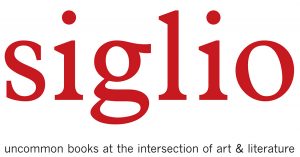 I wrote the manifesto about ten years ago and, at that time, there was not much published in this in-between space, but the landscape has changed quite dramatically since then. A lot more small (and larger) literary presses are paying attention not only to the book-as-object, but they are also taking risks and championing more literary-visual hybrids, which I find very gratifying. The field of artist’s books too, many incorporating text, has really blossomed (the proliferation of art book fairs and the energy particularly at Printed Matter’s fairs in Los Angeles and New York attest to that). When I started twelve years ago, it was a little lonelier, and perhaps more urgent—I imagined much work lost in drawers, unfinished, as artist-writers couldn’t imagine how their work could possibly be published.
I wrote the manifesto about ten years ago and, at that time, there was not much published in this in-between space, but the landscape has changed quite dramatically since then. A lot more small (and larger) literary presses are paying attention not only to the book-as-object, but they are also taking risks and championing more literary-visual hybrids, which I find very gratifying. The field of artist’s books too, many incorporating text, has really blossomed (the proliferation of art book fairs and the energy particularly at Printed Matter’s fairs in Los Angeles and New York attest to that). When I started twelve years ago, it was a little lonelier, and perhaps more urgent—I imagined much work lost in drawers, unfinished, as artist-writers couldn’t imagine how their work could possibly be published.
Now, while the landscape has shifted, the mission hasn’t. As I seek to dissolve categories, render the invisible visible, to ask readers to read in unfamiliar ways, I move outward toward the margins (as they move), looking for the works that are still unwieldy, hard to define, confounding even, in the most compelling ways.
What are some of the challenges—and rewards!—of producing literary-visual hybrids?
The greatest challenge is really about how to get attention for books that don’t fit easily in the categories that are used by everyone in the book business: distributors, booksellers, librarians, review media, etc. (Readers, I’ve found, don’t care about categories at all, but there are few ways to reach them without the others—social media really isn’t enough when the appeal isn’t mainstream.) The BISAC codes—Book Industry Subject Area codes, which most of these entities depend on—are often ludicrous when applied to Siglio books (because really you’re supposed to have just one or two, maybe three, and there are obviously no categories for collage narratives, artist’s novels, mail art, micrography, eco-poetics, radical geography, altered comics, etc., etc., etc.!
For instance, where does artist-writer Sophie Calle go? Art? Photography? Nonfiction? Fiction? Her narrative-driven works, juxtaposing text and photos, don’t fit neatly anywhere (the fiction/nonfiction tension is acute: one critic has written that her work is “”a petri dish of doubt”). When I first published her, she was extremely well-known in the art world but shockingly unread in that world, and certainly not in the world of literature. Most of her books were out-of-print ten years ago and discussed in relation to their conceptual departure point rather than the actual image+text work, and (with the exception of big fans of Paul Auster, who modeled his character Maria Turner on her in his novel Leviathan) the literary world didn’t know her work at all, much less enough to even ignore or dismiss it. So in this case, it was really about convincing people (reviewers, booksellers) that she belongs not only in the art section, but also in literature, somewhere. That’s the case with too with Marcel Broodthaers, Ray Johnson, and Nancy Spero, for example.
Then there are authors I publish who were invisible or not very well known to either world at the time I published their work (Robert Seydel, Danielle Dutton, Karen Green, Anouck Durand). Or those who for whom there are aficionados but really deserve a larger audience (Dorothy Iannone, Joe Brainard, Jess, Mirtha Dermisache). In all cases, the challenge is really making the time to find and reach out individually to editors and critics, to buyers at indie bookstores, to librarians whom I think are adventurous, curious, and unafraid of the unknown. Fortunately, I have a distributor, DAP/Artbook.com, that is unwavering in their support of Siglio and helps on all of these fronts, too.
The second greatest challenge is production and the cost of production. The Siglio book-object mediates the reader’s experience; it is not the transparent delivery device that most-text based books can be (a great cover, good typesetting, and decent paper go a very long way in that context). But in Siglio’s case, design—in the service of the work and the reader’s experience of it—matters immensely: the size and proportion of the book; the quality and the kind of paper; the ways the binding works, the works inhabit the page, the images are reproduced. What speaks to the sensorium is as critical as what speaks to the intellect (and the heart). As Siglio is a one-person operation without institutional funding or grants, I have to find ways to get these books manufactured beautifully but cost-efficiently, and then actually sell them, because the proceeds are the only funding I have for the next book. This is the process that is most precarious—so many things can go awry.
The rewards, well, are not monetary! But they are enormous. I take great pleasure in serving the work in realizing it as a book, cultivating substantive, thoughtful writing about it, and in connecting that book to readers (sometimes almost individually—I have one book, Eternal Friendship by Anouck Durand, that I feel as if I’ve met every person who’s bought a copy, and they all rave about it, but it’s a very particular set of interests that brings them to it, so not a lot of readers…!). Siglio is idiosyncratic because I choose books to publish that I am unequivocally convinced will continue to excite me every day I work on them, and for a long time after. There’s its own reward in that, and it’s magnified with every book that gets into a reader’s hands.
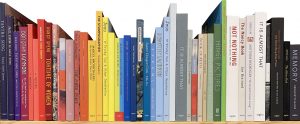
Can you tell us about some of the books you’ve published throughout Siglio Press’s history?
I like to think of Siglio as a very eclectic shelf of books that converse with one another in surprising ways. It Is Almost That: A Collection of Image+Text Work by Women Artists & Writers is really the heart (and microcosm) of the press. The book makes space for work that hadn’t had any, renders legible what previously couldn’t be read. It selected and sequenced works with a real attention to the connective tissue between them rather than categories they represented with the aim to allow space for better known works to be read differently, in relation to works one might not think they had a relationship with; or to give works that were little or unknown equal import as those that were more familiar. I wanted it to be full of surprises, of remarkably different image+text strategies, of most importantly possibility. I hope that’s what all Siglio books do: give readers the possibility to imagine and experience what they didn’t know was possible. I was quite pleased when Eileen Myles wrote in their review at the Poetry Foundation: “Because the frame is image+text, we’re reminded that all of us generally do more. Female artists don’t just stay in their discipline; we experience, we forage, we play. Intuitively and practically speaking, It Is Almost That is, in effect, a handbook. It, by presenting female art history, shows us how to be an artist.”
Earlier this year you published Memory by Bernadette Meyer. Can you share a little about this book? What drew you to it?
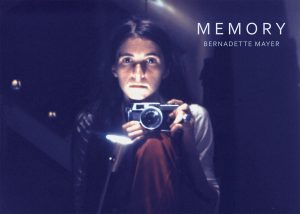 Memory by Bernadette Mayer is a radical, experimental investigation into the nature of memory, its texture, surface and material. For one month (July) in 1971, Mayer—who was a primary participant in both the downtown NYC poetry and conceptual art scenes—exposed a roll of film and kept a diary, which she turned into an installation work the following year composed of 1100 photographs and six hours of audio, in which she read 200 pages of writing. After the 1972 installation, it was not remounted in its entirety until almost 45 years later, in 2016. North Atlantic Books published just the text in 1975 (which went out of print and is now a very expensive book, if you can find it), so the work had a legendary reputation, but it was really invisible for decades. It was also thought to be “unpublishable” (see Marcella Durand’s review at Hyperallergic) because of its scope, its seeming impossible manifestation as a book.
Memory by Bernadette Mayer is a radical, experimental investigation into the nature of memory, its texture, surface and material. For one month (July) in 1971, Mayer—who was a primary participant in both the downtown NYC poetry and conceptual art scenes—exposed a roll of film and kept a diary, which she turned into an installation work the following year composed of 1100 photographs and six hours of audio, in which she read 200 pages of writing. After the 1972 installation, it was not remounted in its entirety until almost 45 years later, in 2016. North Atlantic Books published just the text in 1975 (which went out of print and is now a very expensive book, if you can find it), so the work had a legendary reputation, but it was really invisible for decades. It was also thought to be “unpublishable” (see Marcella Durand’s review at Hyperallergic) because of its scope, its seeming impossible manifestation as a book.
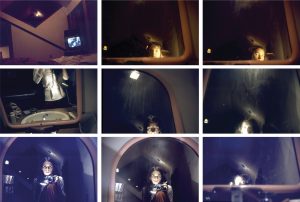
I first heard about Memory through Bill Berkson (whom I got know when I published Siglio’s first book, The Nancy Book by Joe Brainard). It was one of a few projects he suggested to me when I was scouting for work for It Is Almost That. At the time I lived in LA, so I drove to the UC–San Diego Library, where the Bernadette Mayer Papers are archived, and looked through all of the slides. I fell in love with its ambition, its sprawl, its energy, its relentlessness. With the text, this is still a radical work, and it was an obvious choice to excerpt for the collection.
When Bernadette’s daughter approached me about publishing the project as a whole just about a year and half ago (I’m kind of shocked when I write that!), I didn’t hesitate to say yes. I knew enough to know it was a massive undertaking logistically but also conceptually: how to translate this enormous, spatial/aural project to book form, and how to execute that well? I think I brought everything I learned in twelve years of publishing to bear on how this book was edited, designed, and executed. It is the most unwieldy book I’ve ever published, and I’m stupendously proud of it.
Siglio Press is currently partnering with Poets House on Language Is a Temptation, a project featuring poets, writers, critics, and artists reading passages from Memory every day. What inspired this project, and what are your hopes for it? How did the COVID-19 pandemic affect your plans?
The Poets House series was directly a result of pandemic! In the wake of losing an almost gale-force wind in Siglio’s sails this spring, I had to think about how to translate events to a virtual space in an interesting, even organic, way. The dailiness of Memory lent itself so obviously to this iteration with Poets House, and it gave us—Paolo Javier, the events coordinator there, and me—room to really think about how to give Memory polyvocality, to collapse time, to infiltrate social media with a different kind of self-recording. My hope is that readers find multiple entry points, multiple ways to connect with the work and read it, as they listen to thirty others navigate it, voice it, take that material of memory and become another “I” in it.
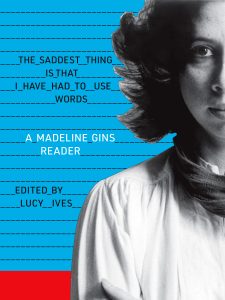 The pandemic shutdown left Memory and another book of which I’m extremely proud—The Saddest Thing Is That I Have Had to Use Words: A Madeline Gins Reader, edited by Lucy Ives, stranded at sea: There were great events for Memory, and Lucy had put together a multi-city tour and a symposium—all canceled—and Siglio’s pop-up at the MoMA Store in NYC shut down after two weeks when the museum shuttered (it will reopen when the museum does). Both books have received a lot of amazing editorial coverage, and Lucy nimbly switched gears, too, so I think some people know about the books and are excited about them, but without indie booksellers hand-selling them, without in-person events to celebrate them, and with an economy that’s really been devastated, it’s hard to know if I can get a critical number of books sold through. So it’s really about the plans for the future—what I’ll be able to do next in 2021—which depend on revenues from 2020. But I’m in the same position as everyone else in the small world of small press, and I think we’re all talking with each other, comparing survival strategies, helping each other as much as we can (thanks, CLMP!!). The planning itself is insanely difficult because really, who knows what’s next. Meanwhile, I do have two fall books coming out that I somehow got on press just a couple of weeks ago!
The pandemic shutdown left Memory and another book of which I’m extremely proud—The Saddest Thing Is That I Have Had to Use Words: A Madeline Gins Reader, edited by Lucy Ives, stranded at sea: There were great events for Memory, and Lucy had put together a multi-city tour and a symposium—all canceled—and Siglio’s pop-up at the MoMA Store in NYC shut down after two weeks when the museum shuttered (it will reopen when the museum does). Both books have received a lot of amazing editorial coverage, and Lucy nimbly switched gears, too, so I think some people know about the books and are excited about them, but without indie booksellers hand-selling them, without in-person events to celebrate them, and with an economy that’s really been devastated, it’s hard to know if I can get a critical number of books sold through. So it’s really about the plans for the future—what I’ll be able to do next in 2021—which depend on revenues from 2020. But I’m in the same position as everyone else in the small world of small press, and I think we’re all talking with each other, comparing survival strategies, helping each other as much as we can (thanks, CLMP!!). The planning itself is insanely difficult because really, who knows what’s next. Meanwhile, I do have two fall books coming out that I somehow got on press just a couple of weeks ago!
What are some other recent or upcoming projects that you’re excited about at Siglio Press?
So, both of these books—like the Madeline Gins Reader and Memory—think about the relationship to language and image in provocative ways and have very specific kinds of experiences mediated by the book-object. The first is Frog Pond Splash, a gem-like collection of collages by Ray Johnson with texts by Bill Wilson, paired as prismatic “correspondances” (Johnson’s parlance), so image and text do not correlate but converse, in Johnson’s and Wilson’s dense, indeterminate, playful ways. I’ve published two other books of Ray Johnson works, all helmed by poet and translator Elizabeth Zuba. It’s a gorgeous book that bursts out of its small proportions.
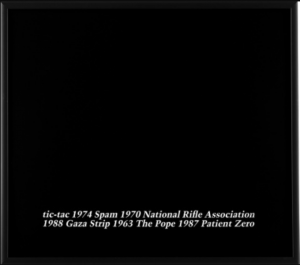 The second is a collection of “photostats” by the Cuban-born American artist Felix Gonzalez-Torres with writings by poets Ann Lauterbach and Mónica de la Torre. Like Calle, Gonzalez-Torres is deeply admired in the art world, but his text works have not been read or considered as writing. The photostats—which were made at the height of the AIDS crisis, in a pre-internet era—are profoundly suggestive lists of political, cultural, and historical references that appear as white text on black fields. They disrupt linear time and hierarchies of information, and they have a great kinship to poetry in their use of specificity and ambiguity, in their operation as open fields. They ask us to interrogate how we receive and prioritize information, how we remember and forget. It is work that uncannily speaks to our moment now as it traverses layers of history and injustice, grief and loss, and the possibility of regeneration and reinvention. There is so much to contemplate in these photostats—it’s been a very moving experience to work on this book during the pandemic and through the last month of protests.
The second is a collection of “photostats” by the Cuban-born American artist Felix Gonzalez-Torres with writings by poets Ann Lauterbach and Mónica de la Torre. Like Calle, Gonzalez-Torres is deeply admired in the art world, but his text works have not been read or considered as writing. The photostats—which were made at the height of the AIDS crisis, in a pre-internet era—are profoundly suggestive lists of political, cultural, and historical references that appear as white text on black fields. They disrupt linear time and hierarchies of information, and they have a great kinship to poetry in their use of specificity and ambiguity, in their operation as open fields. They ask us to interrogate how we receive and prioritize information, how we remember and forget. It is work that uncannily speaks to our moment now as it traverses layers of history and injustice, grief and loss, and the possibility of regeneration and reinvention. There is so much to contemplate in these photostats—it’s been a very moving experience to work on this book during the pandemic and through the last month of protests.
